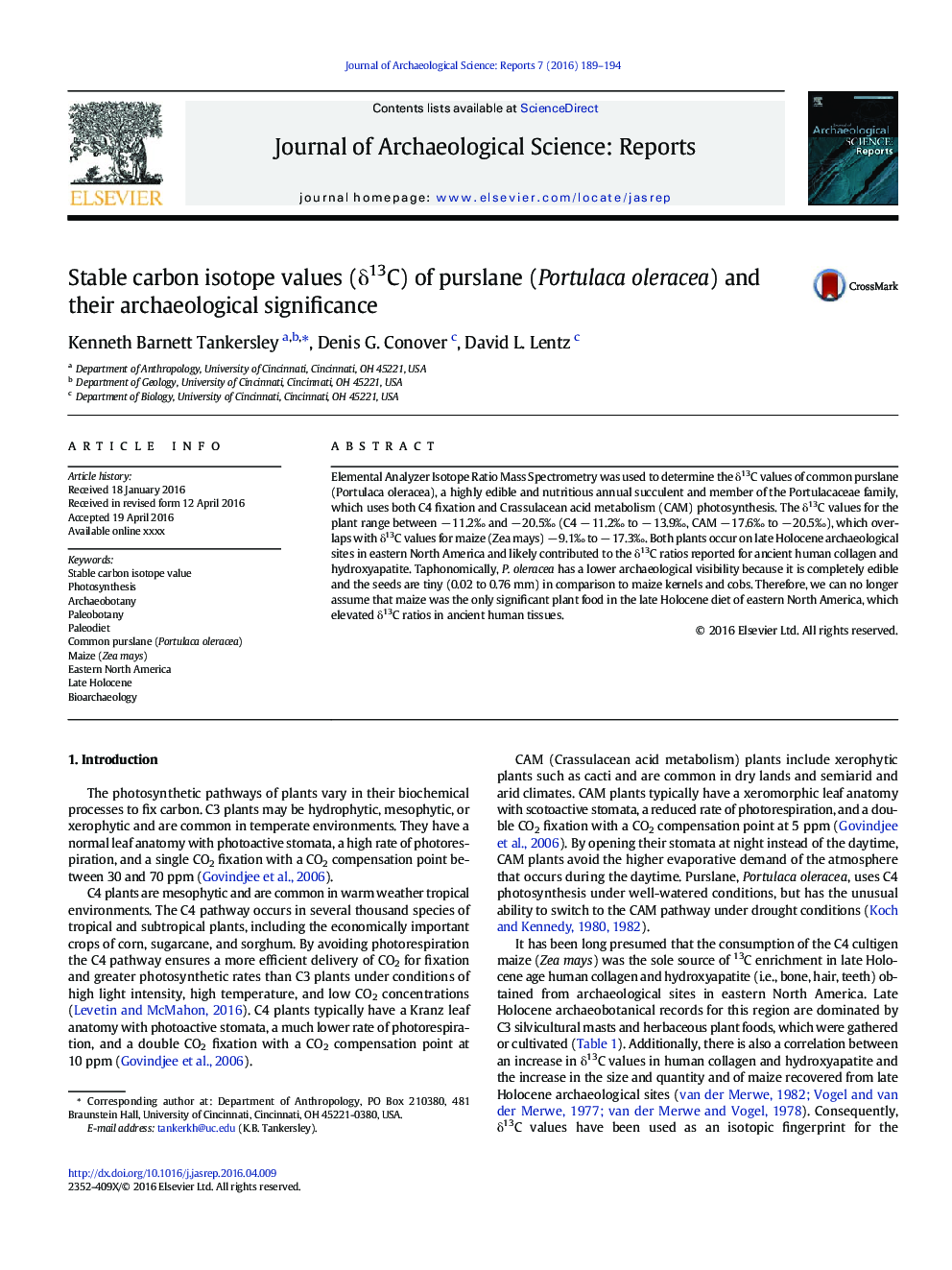| Article ID | Journal | Published Year | Pages | File Type |
|---|---|---|---|---|
| 7446451 | Journal of Archaeological Science: Reports | 2016 | 6 Pages |
Abstract
Elemental Analyzer Isotope Ratio Mass Spectrometry was used to determine the δ13C values of common purslane (Portulaca oleracea), a highly edible and nutritious annual succulent and member of the Portulacaceae family, which uses both C4 fixation and Crassulacean acid metabolism (CAM) photosynthesis. The δ13C values for the plant range between â 11.2â° and â 20.5â° (C4 â 11.2â° to â 13.9â°, CAM â 17.6â° to â 20.5â°), which overlaps with δ13C values for maize (Zea mays) â 9.1â° to â 17.3â°. Both plants occur on late Holocene archaeological sites in eastern North America and likely contributed to the δ13C ratios reported for ancient human collagen and hydroxyapatite. Taphonomically, P. oleracea has a lower archaeological visibility because it is completely edible and the seeds are tiny (0.02 to 0.76 mm) in comparison to maize kernels and cobs. Therefore, we can no longer assume that maize was the only significant plant food in the late Holocene diet of eastern North America, which elevated δ13C ratios in ancient human tissues.
Keywords
Related Topics
Social Sciences and Humanities
Arts and Humanities
History
Authors
Kenneth Barnett Tankersley, Denis G. Conover, David L. Lentz,
